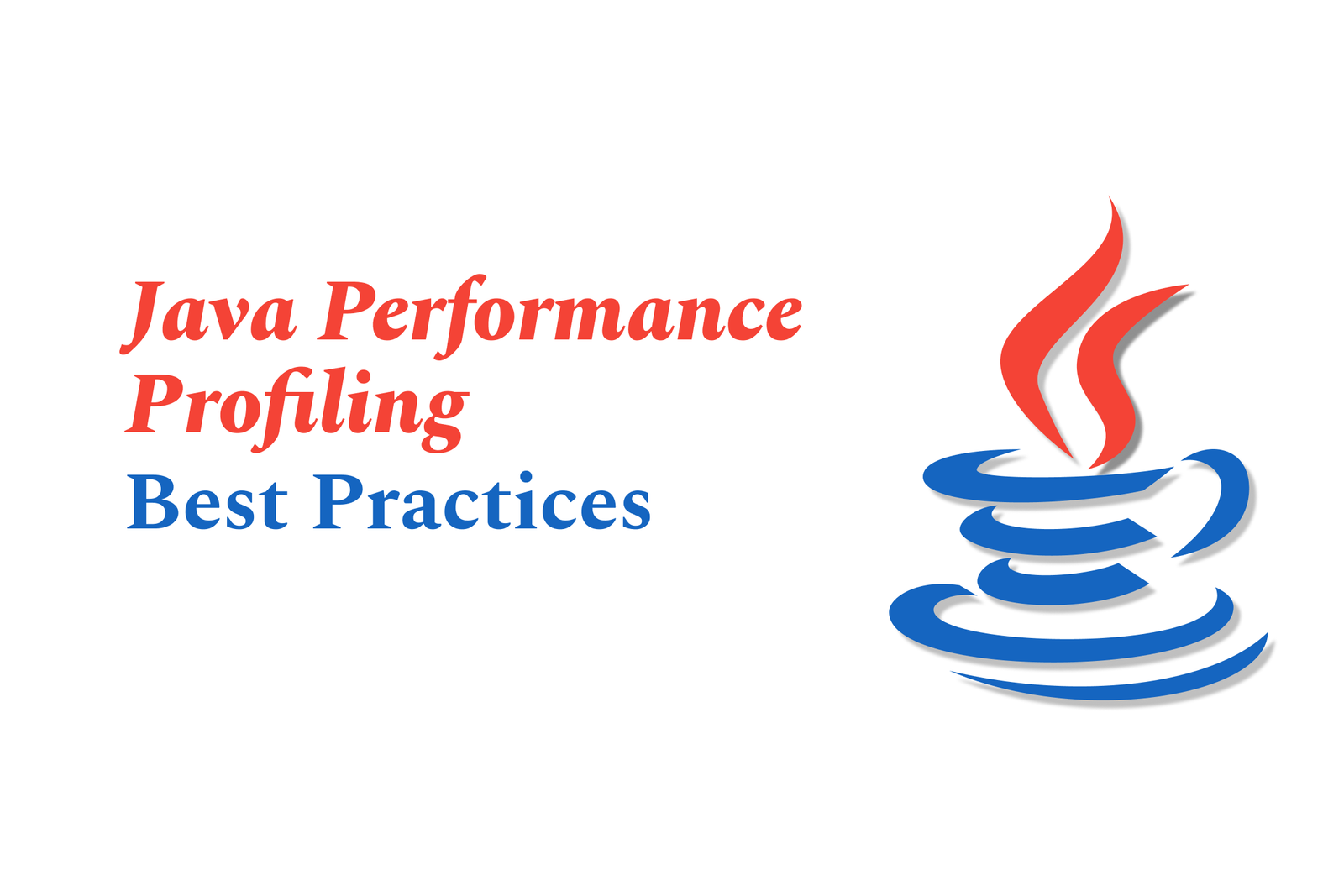Java performance profiling best practices
Java performance profiling involves analyzing application runtime to identify bottlenecks and optimize resource use. Best practices include using low-overhead sampling, combining tools with observability platforms, profiling incrementally, and monitoring CPU, memory, and thread activity for effective optimization.
Java Performance Profiling Best Practices
1 ) Understanding Java Profiling
Java profiling involves analyzing the runtime behavior of Java applications to identify performance bottlenecks, optimize resource usage, and improve overall efficiency. Profilers collect detailed data on method execution times, memory allocation, thread activities, and I/O operations, enabling developers to pinpoint problematic code sections consuming excessive CPU or memory.
2 ) Types of Java Profilers
Sampling Profilers: Periodically capture snapshots of the application's call stack to identify hotspots without modifying code.
Instrumentation Profilers: Inject code into the application to gather comprehensive, detailed performance metrics by modifying bytecode.
3 ) Use Cases for Java Profilers
Profilers assist in:
Performance Optimization: Detect slow methods or inefficient processes affecting application speed.
Memory Leak Detection: Track object allocation and garbage collection to prevent out of memory errors.
Thread Profiling: Identify thread contention, deadlocks, and concurrency issues in multi threaded environments.
4 ) Popular Java Profiling Tools in 2024
VisualVM: Free, provides basic CPU, memory, and thread profiling.
YourKit: Premium tool with advanced profiling features and intuitive UI.
JProfiler: Comprehensive commercial profiler, ideal for complex performance issues.
NetBeans Profiler: Open source profiler integrated with NetBeans IDE.
IntelliJ Profiler: Integrated with IntelliJ IDEA, offers convenient profiling inside the IDE.
Async Profiler: Low overhead sampling profiler for CPU and allocation profiling.
Arthas: Command line tool for real time profiling and diagnostics.
Digma Continuous Feedback: Enhances traditional profiling by analyzing observability data to speed up result interpretation and root cause analysis.
5 ) Best Practices for Effective Java Profiling
Attach profilers early during troubleshooting rather than waiting for total failures.
Combine profiling with observability platforms like Digma for faster diagnosis and actionable insights.
Use sampling profilers for low overhead initial assessment and switch to instrumentation profilers for deep dives.
Analyze call trees carefully to localize performance bottlenecks and resource hogs.
Profile code changes incrementally to identify regressions about recent commits or updates.
Monitor critical dimensions: CPU usage, memory allocation patterns, garbage collection, and thread activity for a holistic performance view.
6 ) Why Java Profiling Is Crucial
Profiling prevents costly hardware upgrades by identifying software inefficiencies early. It improves user experience with faster response times and reduces operational cloud costs by optimizing resource consumption.
7 ) Challenges and Solutions
Traditional profilers like YourKit, while powerful, can produce complex data that are time consuming to manually analyze. Augmenting them with continuous feedback tools like Digma helps interpret data faster, prioritize performance issues by impact, and focus optimization efforts effectively.
Conclusion
Java performance profiling is essential for building robust, responsive applications. Leveraging a mix of modern profiling tools with observability insights and following best practices ensures efficient fault detection, precise bottleneck identification, and systematic performance improvements in Java software projects.
https://justacademy.in/news-detail/android-cloud-backup-features
https://justacademy.in/news-detail/devtools-updates-flutter-devs-should-know
https://justacademy.in/news-detail/apple?s-new-swift-playgrounds-update-for-2025
https://justacademy.in/news-detail/what?s-new-in-swift-playgrounds-5.5
https://justacademy.in/news-detail/flutter-open-source-tools-roundup
Related Posts
Java supports GDPR and data privacy by enabling secure data handling through encryption, controlled access, and precise data management. It allows developers to minimize PII exposure, ensure data confidentiality, and design workflows that comply with data protection regulations effectively.
Java code quality tools have evolved to include advanced static analysis, integrated security checks, and AI-powered code reviews. These updates help developers detect bugs, enforce coding standards, and enhance security, streamlining the development process and improving overall code reliability.
Java remains a cornerstone in big tech companies, evolving with modern features like records, pattern matching, and virtual threads. Its robust ecosystem, enhanced performance, and growing AI integrations keep it vital for both legacy systems and innovative new projects.
Java and CI/CD pipeline optimizations streamline Java application development by automating builds, tests, and deployments. They improve efficiency through parallelization, caching, and secure secrets management, enabling faster feedback loops and more reliable, scalable software delivery.
Java supports modern cryptography standards through its flexible Java Cryptography Architecture (JCA), enabling integration of advanced algorithms like AES, EdDSA, and post-quantum tools. Libraries like Bouncy Castle offer FIPS-certified, hardware-accelerated implementations for secure development.
Java 23 enhances record patterns by enabling concise, direct destructuring of record components within pattern matching, simplifying type checks and data extraction. This improvement boosts code readability and expressiveness by reducing boilerplate in handling immutable data classes.
Java remains a top choice for mobile app backends, powering scalable, secure, and high-performance server-side solutions. Latest trends include cloud-native microservices, reactive programming, and enhanced JVM optimizations, enabling efficient, flexible, and robust mobile backend development.
Java SE 24 and LTS Java SE 21 offer enhanced features and performance, while Apache Spark 4.0.0 introduces Scala 2.13 support and advanced ML and SQL capabilities. Together, they empower developers to build scalable, high-performance data applications with modern tools.
JUnit 5 modernizes Java testing with a modular architecture, improved assertions, and seamless Java 8+ support. Beyond JUnit, tools like Mockito and AssertJ enhance mocking and assertions, creating a powerful, flexible ecosystem for writing clean, efficient Java unit tests.
Java plays a pivotal role in cloud automation tools by providing a robust, platform-independent language used to build scalable automation frameworks like Jenkins and Selenium, enabling efficient CI/CD pipelines, testing, and orchestration across diverse cloud environments.










